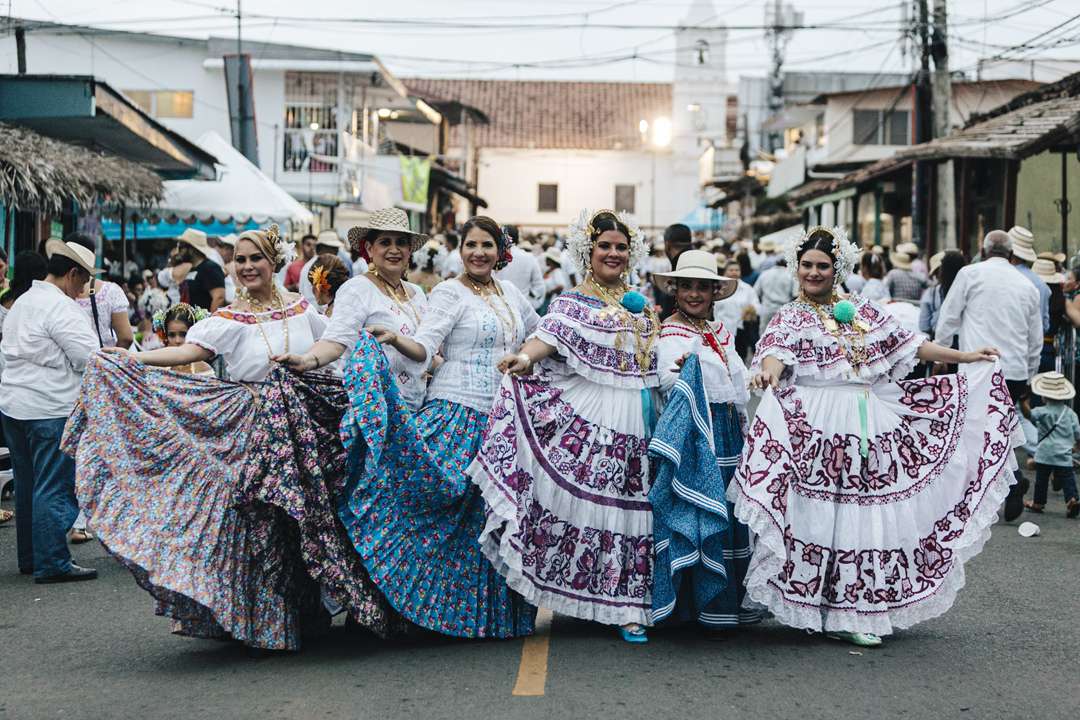The Panamanian Pollera has its origins in Spain, it was the dress worn by Spanish women in the 16th or 17th century and arrived during Spanish colonization. In those times, the dress or skirt that was worn daily was generally white with two or three skirts with overlays or floral embroidery, according to historical records.
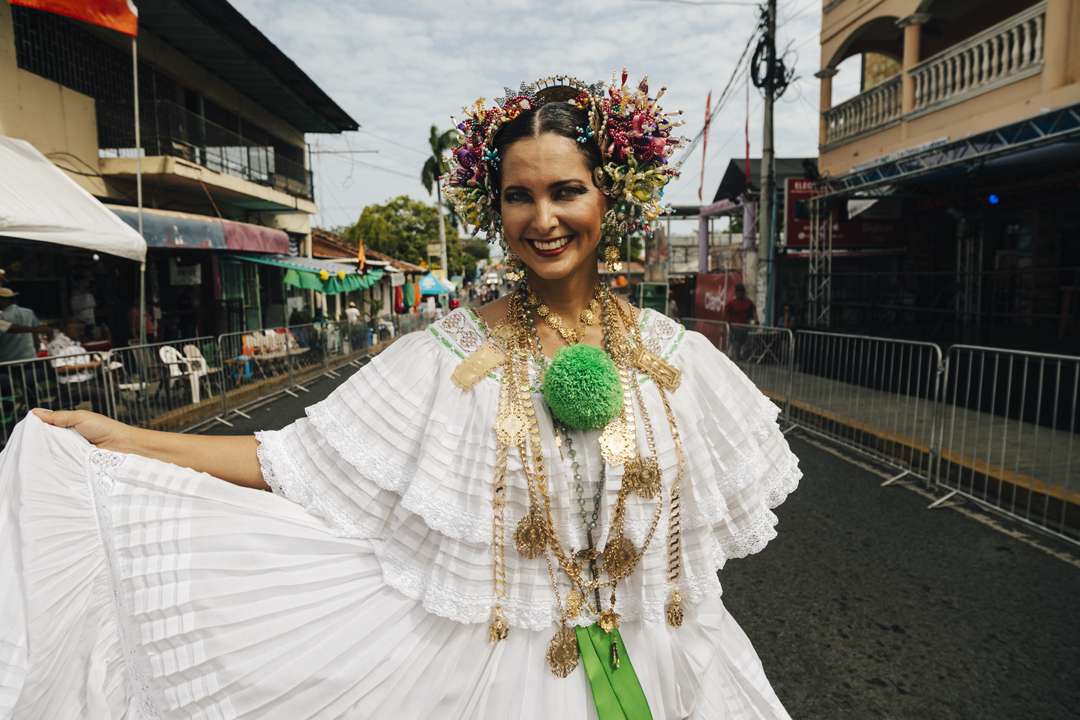
Heritage of Dresses Brought from Various Regions of Spain
According to historians, this dress was inherited from the regions of Seville and Andalusia; they were also used in weathers similar to the aforementioned regions, although totally different from those worn by flamenco dancers. The Panamanian Pollera is a great mixture of the costume of the Spanish women from different regions of Spain, adopted according to the climate, culture and geographical situation of the isthmus and which carried a rhythm of evolution that had its beginning in the colonial era to current times.
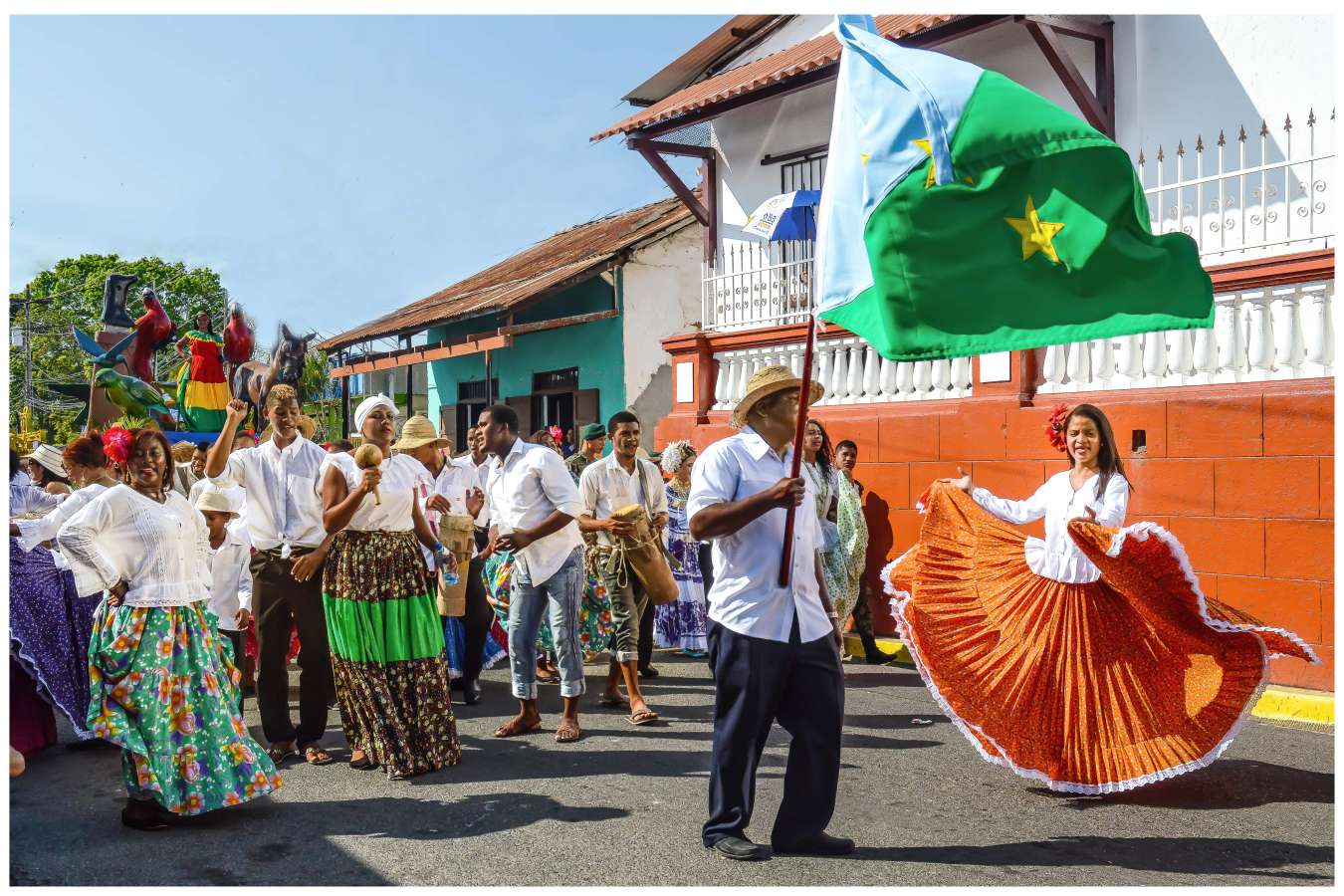
Photo: https://larrywilkinsonphotography.zenfolio.com/
A History Related to Slavery of that Era
It is considered that in the 16th and 17th centuries the skirt was a white tunic with a wide neckline worn by slaves or servants when they were breastfeeding, separating these women from the rest of the servants when the mistress was pregnant. This happened since it was common for white women to die while giving birth, therefore the slave or servant breastfed the child of the deceased owner.
The skirts were white (Still in the gala skirt), and the landladies embroidered the family stitches on them to look more colorful and less simple. But the servants or slaves wore more humble dresses but with better manual work, which is why during the 18th century (18) the landladies began to use the embroidery of the servants on their Polleras.
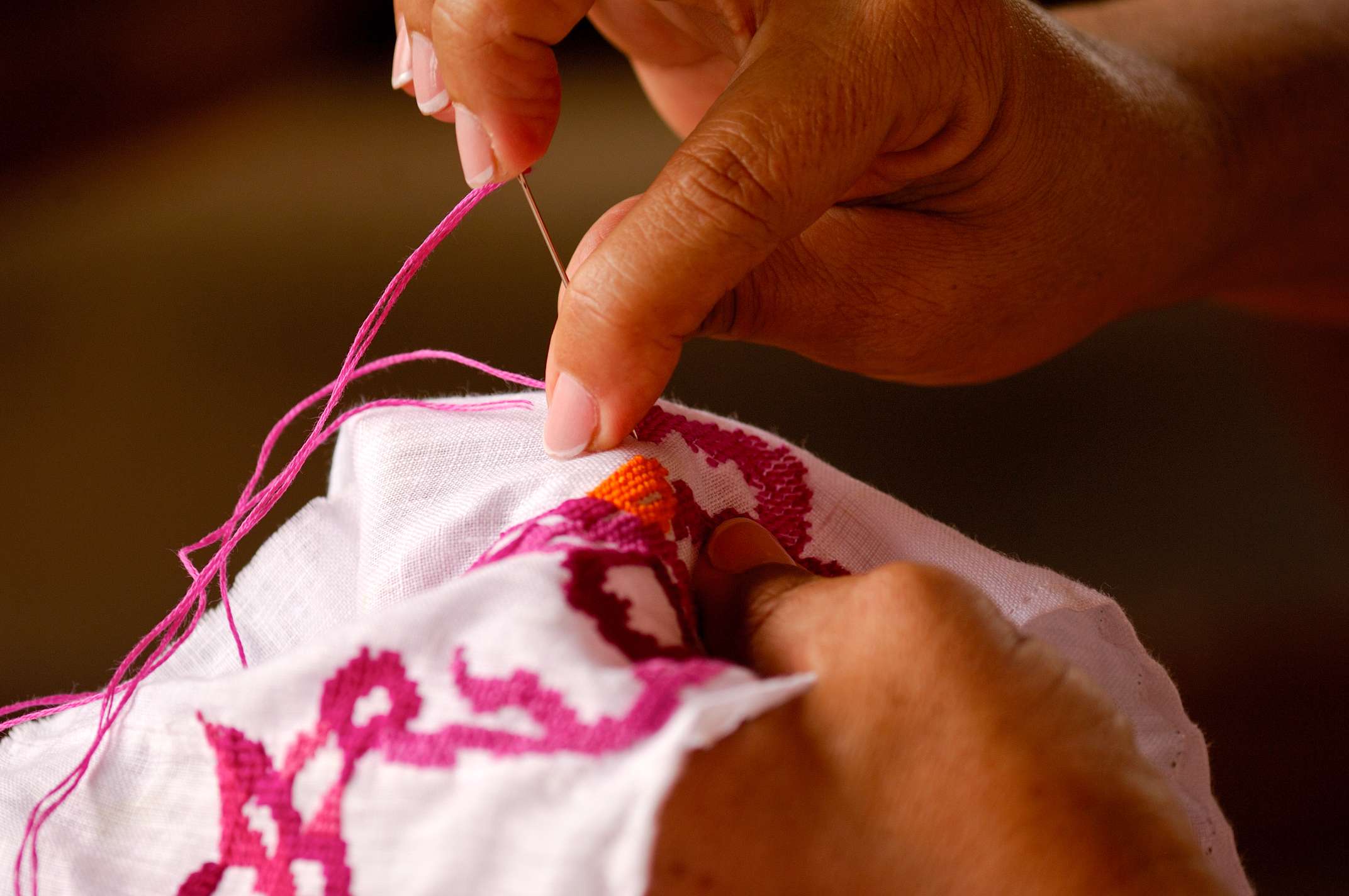
Photo: www.visitpanama.com
The Panamanian Pollera Today
The current design of the skirt is actually an artistic production that allows the beauty of women to shine. All women feel comfortable wearing this dress, since the flight of its washers, its colorful and elegant cut, gives it a stately or princely bearing. The skirt is made up of very important pieces such as: the blouse and the skirt. The shirt is eye-catching with its ruffles, lace and braids. It also has other pieces such as: mouth waistband, mouth braid, balaclava, shirt body, sleeves, decorations and ruffles.
Generally, the shoes have the same color as the ribbons and wool. The shoes are made of velvet, corduroy or satin and do not have heels. The aristocracy used to luxuriously adorn the upper of the shoe with a short, tight-fitting waist tie with a lace that fastened on the top with the buckle. However, the average person did not use these decorations on the shoe.
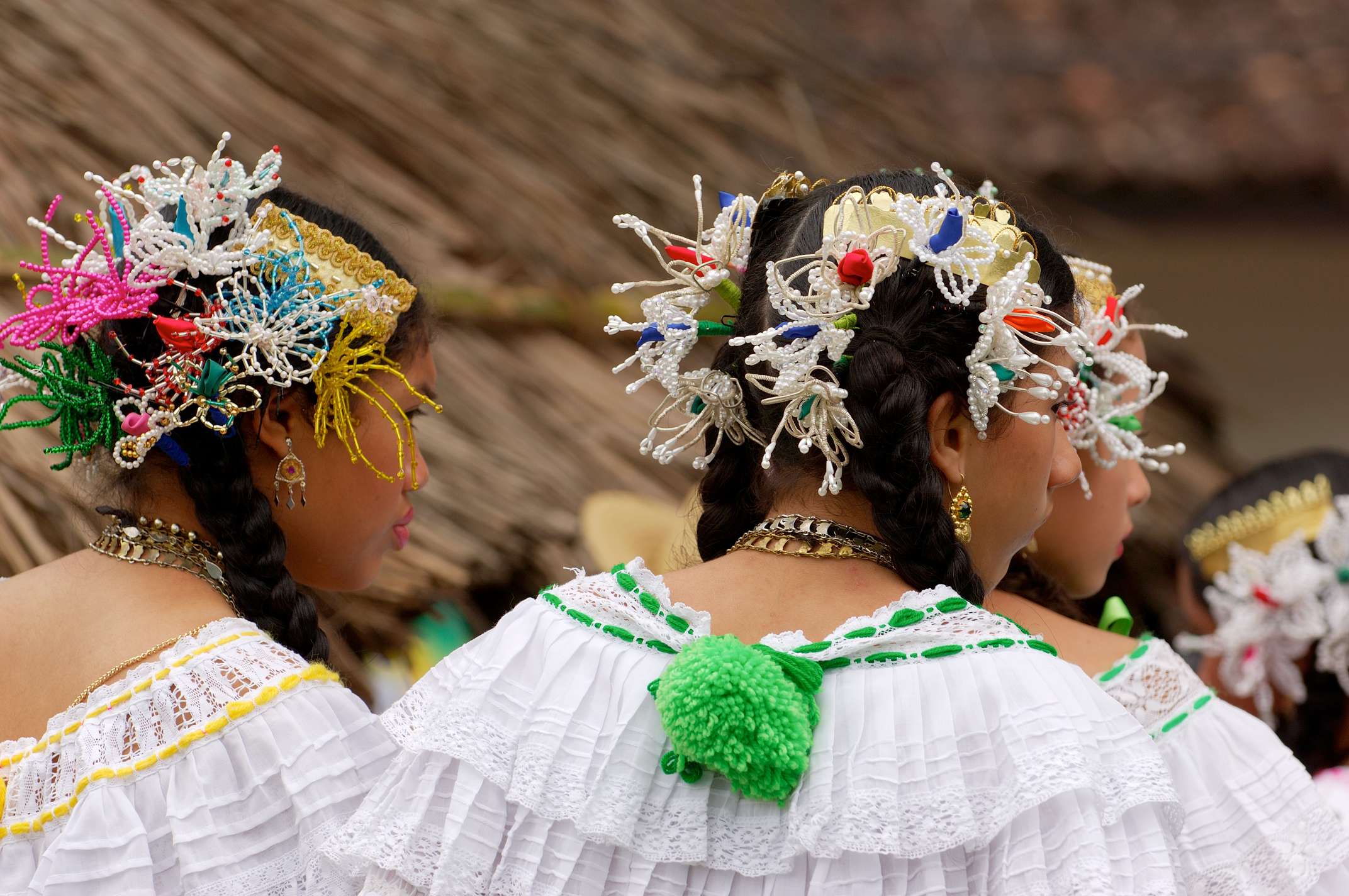
Photo: www.visitpanama.com
The Jewelry Use When Wearing La Pollera
Jewelry is traditionally made of gold and pearls, gold and precious stones or gold and corals. There are many chains and cords that are used in the skirt; but almost never exceed seven but neither west less than three, the Chata chain being the essential one to use.
Among these jewels we can mention the comb, the straw, the big comb, the patches or pains, the bone cap, the earrings, chains and cords. Finally, the “tembleques” that are placed on the head that imitate natural flowers, leaves, dragonflies, butterflies, flies, marine animals or birds.
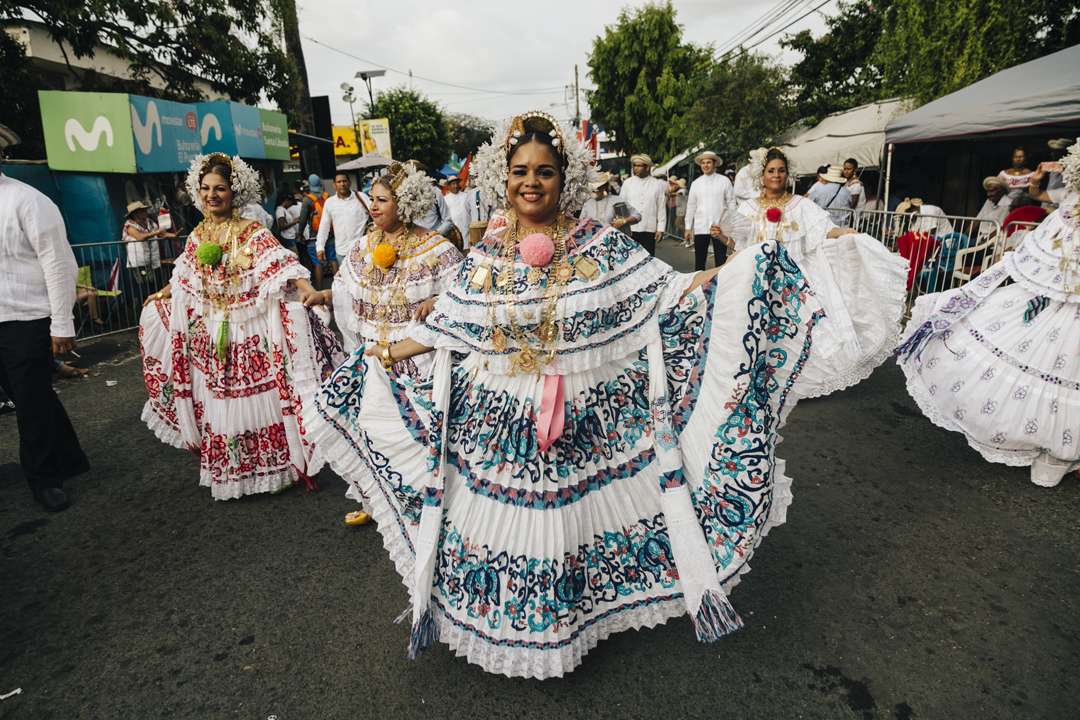
Photos courtesy: www.visitpanama.com


